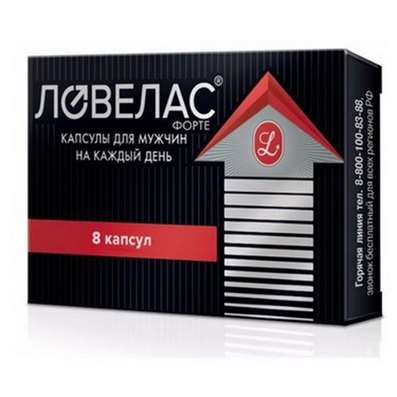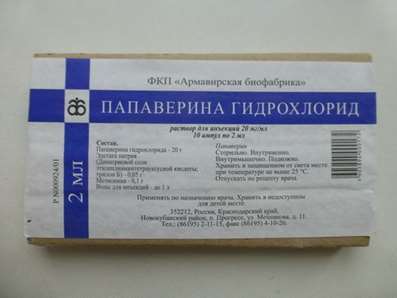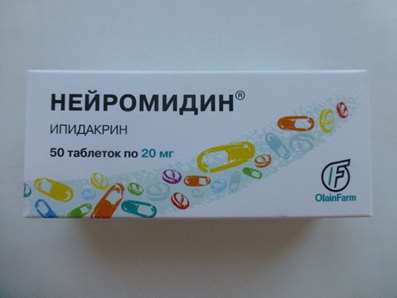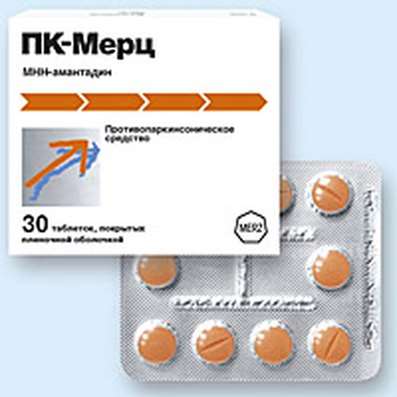Instruction for use: Stabisol GAK 6%
I want this, give me price
Dosage form: Solution for infusions
Active substance: Amylum hydroxyaethylicum
ATX
B05AA07 Hydroxyethyl starch
Pharmacological group
Substitutes for plasma and other blood components
The nosological classification (ICD-10)
A41.9 Septicemia, unspecified: Septic diseases; Septicemia / bacteremia; Toxico-infectious shock; Endotoxin shock; Bacterial septicemia; Bacterial infections of severe course; Generalized infections; Generalized systemic infections; Infections generalized; Wound sepsis; Septiccopymia; Septic-toxic complications; Septicemia; Septic conditions; Septic shock; Septic condition; Septic shock
A48.3 Toxic shock syndrome: Bacteremic shock; Infectious-toxic shock; Intoxication syndrome; Toxico-infectious shock; Toxic shock; Chronic intoxication in diseases of the digestive tract; Chronic intoxication in gastrointestinal infections; Endotoxin shock
B99.9 Other and unspecified infectious diseases
E86 Decreased fluid volume [hypovolaemia]: Water deficit recovery; Indemnification of isotonic deficiency of water; Compensation for isotonic sodium deficiency; Compensation BCC; Replenishment of water deficit with stored KShS; Replenishment of fluid volume; Replenishment of BCC; Replenishment of electrolytes with stored KHS; Hypovolemic conditions; Hypovolemic condition; Hypovolemia; Hypotonic form of hypohydration; Hypochloremia with dehydration; Dehydration of different origin; Dehydration in children; Substitution of plasma volume for blood loss in pediatrics; Substitution of plasma with its losses and burns; Isotonic dehydration; Isotonic form of hypohydration; Violation of the water-salt balance; Dehydration;Dehydration in acute intestinal infections; Acute hypovolemia; Loss of fluid in burns; Toxicosis with exsycosis
R57.1 Hypovolemic shock: Hypovolemic shock during surgery; Acute hypovolemia
R57.8 Other shock: shock transfusion; obstructive shock; circulatory shock
R57.8.0 * Burn shock: Pain shock for burns; Burn shock
R58 Bleeding, not elsewhere classified: Abdominal apoplexy; Hemorrhagia; Haemorrhage of the esophagus; Hemorrhage; Generalized bleeding; Diffuse bleeding; Diffuse bleeding; Prolonged bleeding; Blood loss; Blood loss during surgical interventions; Bleeding during surgery and in the postoperative period; Bleeding during labor; Bleeding and haemorrhage in hemophilia B; Bleeding from the gums; Bleeding intraoperative abdominal; Bleeding against a background of coumarin anticoagulants; Hepatic hepatitis; Bleeding in hemophilia A; Bleeding at hemophilia A; Bleeding with inhibitory forms of hemophilia A and B; Bleeding due to leukemia; Bleeding in patients with leukemia; Bleeding; Bleeding due to portal hypertension; Bleeding due to hyperfibrinolysis; Drug bleeding; Local bleeding; Local bleeding due to activation of fibrinolysis; Massive blood loss; Acute blood loss; Parenchymal hemorrhage; Hepatic bleeding; Postoperative hemorrhage; Kidney bleeding; Vascular-platelet hemostasis; Traumatic bleeding; Threatening bleeding; Chronic blood loss
T14 Injury to unspecified site: Pain syndrome with trauma and after surgery; Injuries; Extensive trauma to the skin and soft tissues; Muscle and ligament injuries; Injuries; Fibroma traumatic; Acute sport injuries
T14.1 Open wound of unspecified body region: Secondary healing processes; Sluggishly granulating wounds; Sluggishly healing wounds; Sluggish wounds; Deep Wounds; Purulent wound; Granulating wounds; Prolonged non-healing wound; Long-lasting non-healing wound and ulcer; Long-lasting non-healing soft tissue wound; Healing of wounds; Wound healing; Capillary bleeding from superficial wounds; Bleeding wound; Radiation Wounds; Slowly epithelializing wounds; Minor cuts; Suppurated wounds; Violation of wound healing processes; Breach of skin integrity; Violations of the integrity of the skin; Violations of the integrity of the skin; Small cuts; Uninfected wounds; Uncomplicated wounds; Operating wound; Primary treatment of surface contaminated wounds; Primary wound treatment; Primary-delayed treatment of wounds; Poorly cicatrizing wound; Poor wound healing; Bad wound; Superficial injury; Superficial wound with mild exudation; Wound; The wound is large; Bite wound; Wound process; Wounds; Wound healing wounds; Stump Wounds; Wounds for gunshot; Wounds with deep cavities; Difficult healing wounds; Difficult wounds; Chronic Wounds
T30 Thermal and chemical burns of unspecified site: Pain syndrome with burns; Pain in burns; Pain with burns; Sluggishly healing post-burn wounds; Deep burns with a wet scab; Deep burns with abundant compartments; Deep burn; Laser burn; Burn; Burn of rectum and perineum; Burn with mild exudation; Burn disease; Burn injury; Superficial burn; Superficial burn of I and II degree; Superficial skin burns; After-burn trophic ulcer and wound; Post-burn complication; Loss of fluid in burns; Sepsis burn; Thermal burns; Thermal skin lesions; Thermal burn; Trophic after-burn ulcers; Chemical burn; Surgical burn
T79.4 Traumatic shock: Haemorrhagic shock; Crash Syndrome; Posthemorrhagic shock; Postoperative shock; Post-traumatic shock; Post-traumatic shock; Traumatic shock; Syndrome of hemorrhagic shock and encephalopathy
T81.0 Bleeding and hematoma complicating the procedure, not elsewhere classified: Bleeding in the postoperative period; Bleeding during transfusion; Bleeding during operations on the brain; Bleeding during surgical interventions; Bleeding after colorectal interventions; Bleeding after prostatectomy; Bleeding during surgery and in the postoperative period; Bleeding due to surgery on the prostate and urinary tract
T81.1 Shock during or after the procedure, not elsewhere classified: Operating shock; Postoperative shock; Operational shock
Z100 * CLASS XXII Surgical practice: Abdominal surgery; adenomectomy; Amputation; Coronary angioplasty; Angioplasty of the carotid arteries; Antiseptic skin treatment for wounds; Antiseptic Hand; Appendectomy; atherectomy; Balloon coronary angioplasty; Vaginal hysterectomy; The coronary bypass; Interventions in the vagina and cervix; Interventions on the bladder; Intervention in the mouth; Restoration and reconstructive surgery; Hand hygiene of medical personnel; Gynecologic surgery; Gynecological intervention; Gynecological surgery; Hypovolemic shock during operations; Disinfection of purulent wounds; Disinfection of wounds edges; Diagnostic intervention; Diagnostic procedures; Cervical Diathermocoagulation; Long-surgery; Replacing the fistula catheters; Infection in orthopedic surgery; Artificial heart valve; cystectomy; Short-term outpatient surgery; Short-term operation; Short surgical procedures; Krikotireotomiya; Blood loss during surgery; Bleeding during surgery and in the postoperative period; Kuldotsentez; laser photocoagulation; laser coagulation; retinal laser coagulation; Laparoscopy; Laparoscopy in Gynecology; CSF fistula; Small gynecological operations; Small surgical procedures; Mastectomy and subsequent plastic; mediastinotomy; Microsurgical operations on the ear; Mukogingivalnye operation; suturing; Minor surgery; neurosurgical operation; Immobilization of the eyeball in ophthalmic surgery; testectomy; pancreatectomy; Perikardektomiya; The period of rehabilitation after surgery; The period of convalescence after surgery; Percutaneous transluminal coronary angioplasty; Pleural thoracentesis; Pneumonia postoperative and posttraumatic; Preparation for surgical procedures; Preparation for surgery; Preparation of the surgeon's hands before surgery; Preparation of the colon for surgical procedures; Postoperative aspiration pneumonia in neurosurgical and thoracic surgery; Postoperative nausea; Postoperative bleeding; postoperative granuloma; postoperative shock; The early postoperative period; myocardial revascularization; Radiectomy; gastric Resection; bowel resection; uterine Resection; liver Resection; enterectomy; Resection of part of the stomach; Reocclusion of the operated vessel; Bonding tissues during surgical procedures; Removal of sutures; Condition after eye surgery; Condition after surgery; Condition after surgery in the nasal cavity; Condition after gastrectomy; Status after resection of the small intestine; Condition after tonsillectomy; Condition after removal of the duodenum; Condition after phlebectomy; Vascular surgery; Splenectomy; Sterilization of surgical instruments; Sterilization of surgical instruments; sternotomy; Dental surgery; Dental intervention in periodontal tissues; strumectomy; Tonsillectomy; Thoracic surgery; Thoracic surgery; total gastrectomy; Transdermal intravascular coronary angioplasty; Transurethral resection; Turbinektomiya; Removal of a tooth; cataract surgery; Removal of cysts; tonsillectomy; Removal of fibroids; Removing the mobile primary teeth; Removing polyps; Removing broken tooth; Removal of the uterus body; Removal of sutures; Fistula likvoroprovodyaschih ways; Frontoetmoidogaymorotomiya; Surgical infection; Surgical treatment of chronic limb ulcers; Surgery; The surgery in the anal area; The surgery on the colon; Surgical practice; The surgical procedure; Surgical interventions; Surgery on the gastrointestinal tract; Surgical procedures on the urinary tract; Surgical procedures on the urinary system; Surgical intervention of the genitourinary system; Surgical procedures on the heart; Surgical manipulation; surgery; Surgery on the veins; Surgical intervention; Vascular surgery; Surgical treatment of thrombosis; Surgery; cholecystectomy; Partial gastric resection; hysterectomy; Percutaneous transluminal coronary angioplasty; Percutaneous transluminal angioplasty; Coronary artery bypass; tooth Extirpation; Extirpation of milk teeth; pulpectomy; pulsative cardiopulmonary bypass; tooth Extraction; teeth Extraction; cataract extraction; Electrocoagulation; endourological intervention; episiotomy; Etmoidotomiya; Complications after tooth extraction
Composition and release form
Solution for infusion - 500 ml of 6%
hydroxyethyl starch (HES 450 / 0.7), 30 g
4.5 g of sodium chloride
water injection to 500 ml
in vials of 250 or 500 ml; in the box 1 or 10 vials.
Description of dosage form
Transparent, slaboopalestsiruyuschy, colorless or slightly yellow solution.
Characteristic
Isotonic solution of 6% synthetic colloid hydroxyethyl starch with an average molecular weight of 450,000 daltons, a degree of substitution of 0.7 ± 0.05, obtained by partial hydrolysis of corn starch. The structure is similar to a molecule of glycogen.
Pharmachologic effect
Mode of action - plazmozameshchath.
It has volemic action within 85-100% of the injected volume, continuing for 6-8 hours, due to the ability to bind and retain water (including from the interstitial to the intravascular space allocation). It improves the rheological properties of blood and microcirculation, cerebral and utero-placental blood flow (including by reducing the hematocrit). It improves transport and ensure tissue oxygenation, reduced plasma viscosity, platelet aggregation and prevents the aggregation of red blood cells. Is effective in conditions associated with increased permeability of the capillary walls.
There has local irritating and immunotoxic effects. Accumulating in the cells of the reticuloendothelial system, it has no toxic effects on the liver, lungs, spleen, lymph nodes.
Indications of the drug Stabisol GAK 6%
hypovolemia; prevention and treatment of hypovolemic shock in surgical interventions, injuries, infections, burns, injuries, poisonings and other conditions that require reimbursement of BCC; hemodilution, to reduce the volume of blood products during blood replacement.
Contraindications
Hypersensitivity, hypervolemia, hyperhydration, severe congestive heart failure, renal insufficiency - serum creatinine 2 mg / dl, severe hemorrhagic diathesis, pulmonary edema, chronic liver disease, children under 10 years (on the application of the data is not present).
Pregnancy and breast-feeding
There is no evidence of a direct embryotoxicity or teratogenicity.
Side effects
Increased levels of amylase (comes back to normal after 3-5 days), symptoms of increased bleeding (at high doses). Anaphylactoid reactions (frequency - based on the entered number of units of the infusion solution - approximately 0.085%), manifested in the form of vomiting, light fever, chills, itching, observed an increase in the top of the submandibular and parotid salivary glands, flu-like symptoms (headache, aching muscles ), peripheral edema of the lower extremities.
Extremely rare (incidence - based on the number of units entered the infusion solution - about 0.006%) of intolerance, accompanied by shock and life-threatening symptoms (sometimes up to the cessation of circulatory and respiratory failure). In this case, the infusion should be stopped immediately, to take all necessary emergency measures.
Interaction
Potentiates the nephrotoxicity of aminoglycoside antibiotics. When mixed with other infusion solutions, concentrates for the preparation of infusions, injections and powder for solution for injection may be chemical and therapeutic incompatibility.
Dosing and Administration
IV, drip first 10-20 ml injected slowly, controlling the condition of the patient. In hypovolemia - at 250-1000 ml / day (20 ml / kg / day), while hemodilution - 500 ml / day for several consecutive days, the total dose of - 5 l (in excess in exceptional cases may be distributed for up to 4 weeks). The dose rate and duration of the infusion set depending on the severity of hypovolemia and hemorrhage from the hematocrit value. In the absence of an emergency, the recommended duration of infusion for at least 30 minutes in 500 ml.
Precautionary measures
Urgent measures to assist in the event of intolerance reactions are presented in the table (on the Ring, Messmer 1977, Kilian, Mehrkens 1982).
Table
| 1. | skin reactions | protivogistaminnye drugs |
| 2. | Tachycardia, drop in blood pressure, nausea, vomiting | Antihistaminic drugs and corticosteroids (prednisolone 100 mg / w) |
| 3. | The shock, bronchospasm | Epinephrine 0.05-0.1 mg slowly in / Corticosteroids (prednisone 1000 mg / w) |
| 4. | Cardiac arrest and / or respiratory | Resuscitative measures taken in such cases |
It is necessary to take into account the risk of circulatory overload with the introduction of too high a dose and infusion rate are too high.
During treatment should monitor the supply of body fluid. Recommended control serum electrolytes (sodium, potassium, chloride).
By shock states resulting from loss of water and electrolytes, after an initial treatment with recommended further treatment in a balanced electrolyte solution.
Higher doses lead to a decrease of hematocrit, hemoglobin concentration, and plasma protein, causing thinning effect. Values below 10 g hemoglobin and hematocrit% below 27 are considered to be critical. In terms of total protein is less than 5 g% albumin administration is necessary. When blood loss of more than 20-25% of the BCC shown Obligatory additional administration of packed red blood cells.
Special instructions
The drug can have an impact on clinical-chemical parameters (glucose, protein, erythrocyte sedimentation rate, fatty acids, cholesterol, sorbitdegidrogenazy); change the urine specific gravity, the results of urine electrophoresis (psevdoparaproteinuriya).
Prolonged / in infusion should be performed with a dropper.
Use only transparent or slightly opalescent, colorless or slightly yellow solution.
Use solutions in intact vessels. The expiration date cannot be used. The preparation of the printed containers should be used as soon as possible.
Manufacturer
"Berlin-Chemie AG / Menarini Group", Germany.
Storage conditions of the drug Stabisol GAK 6%
At temperture no higher than 25 ° C. Protect from freezing.
Keep out of the reach of children.
The shelf life of the drug Stabisol GAK 6%
5 years.
Do not use beyond the expiration date printed on the package.

 Cart
Cart





